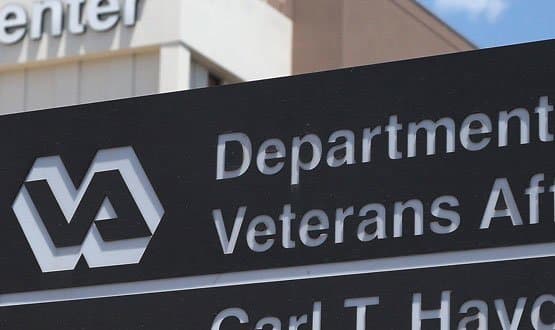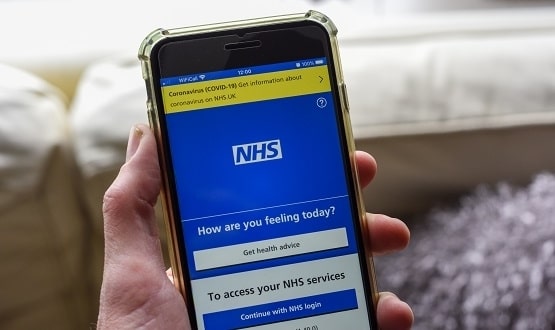VA enveloped in scandal
- 12 June 2014

It started with local news reports suggesting that some military veterans in Phoenix, Arizona, were facing delays in getting appointments for treatment.
Now, the Veterans Health Administration is facing a full blown crisis, with the latest audit of waiting times suggesting that as many as 120,000 veterans have been affected.
Worse, a preliminary audit of data from 731 VA facilities has uncovered instances of pressure to “utilise unofficial lists or engage in inappropriate practices” in order to make waiting times look better than they were.
These practices may have been helped by “widespread confusion about record-keeping” and the failure to develop a modern, electronic booking system for the organisation.
The poster child for UK healthcare reform
All of this may sound familiar from reports-past into failing parts of the NHS. Yet it’s a far cry from the UK’s image of the VA, which is often held up as a model by policy makers; and one with exceptionally good IT.
Just this week, the King’s Fund think-tank issued a report what could be learned from attempts to reform the NHS and health services internationally that heaped praise on the VA for undergoing a “fundamental transformation” in the late 1990s.
“Under new leadership, the VA was transformed from an inefficient and unresponsive public healthcare system to an organisation that was widely admired for its ability to provide high-quality care at an affordable cost to the people it served,” wrote King’s Fund chief executive Chris Ham.
“This involved migrating from a fragmented, hospital-centred system to a series of regionally based, integrated service networks and, in the process, reducing the use of hospitals and strengthening out-of-hospital services.”
This idea – less use of hospitals, more care ‘closer to home’ – is probably the key policy prescription being written for the NHS, as it struggles to bridge the gap between flat funding and rising demand and costs.
It’s an idea that depends on getting incentives and finances right. As Ham wrote in the King’s Fund report, the VA brought in a “performance management approach” that set out “measurable goals” for its centres to achieve, and used “financial and non-financial incentives to support quality improvement.”
The VA also made use another big idea being aimed at the NHS: the “transparent reporting of comparative performance.” And it made big investments in IT more generally.
As Ham also wrote, the VA used “information technology to support the integration of care”; which rather underplays its development of the much-admired, open source, VistA electronic patient record system and its investment in telehealth.
Both VistA and the telehealth projects have been in development since the 1970s, and a substantial number of VA consultations are now conducted by telephone and video. A year ago, EHI reported that NHS England was spending £300,000 on an exchange programme to see what it could learn from both developments.
A reform that worked goes wrong
Yet, along the line, things have gone badly wrong. This spring, CNN reported that veterans were facing long waits at the VA’s centre in Phoenix; and alleged that some had been put on “secret” waiting lists to hide this.
VA hospitals are supposed to see patients within two weeks to a month of a request for an appointment, yet it was alleged that between 1,400 and 1,600 had not been logged into the VA’s systems.
Instead, a recently retired doctor told the network that their details were held on paper until staff could be sure that they’d get an appointment within the target.
Other networks followed up with similar tales from other places; and official reports started to confirm them. A preliminary report by the VA inspector general found that while veterans were officially waiting 24 days on average for care at the VA centre in Phoenix, they were actually waiting for 115 days.
The IG’s wider examination of 731 VA hospitals and large outpatient clinics, released on Monday, found that more than 57,000 veterans had been waiting more than 90 days for an initial appointment, and that over the past ten years, 64,000 people who had enrolled in its healthcare system had never received appointments.
Some 8% of schedulers admitted that they had used the alternative waiting list system; while a further 13% said their supervisors had directed them to falsify appointment dates.
Against this backdrop, the VA has acknowledged that 23 deaths have occurred nationwide because of delayed care.
The IT fails
So what went wrong? Like the NHS, the VA is huge and it has come under pressure to do more with its resources, as demand for its services has risen with the US’ wars in Iraq and Afghanistan.
With this rising pressure, its once-admired performance management and competitive data publication systems seem to have become warped.
As CNN reported at the end of May, “one of the most disturbing revelations” to come out of the scandal is that employee bonuses were tied to meeting the targets. Indeed, some $108,000 of bonuses appears to have been paid out over five years.
Inevitably, the head of the VA, Eric Shinseki, has been forced to resign after a difficult appearance before the Senate. And his deputy, Sloan Gibson, has scrapped the bonuses.
However, schedulers might have found it harder to manipulate the system if the VA had an electronic booking system that made it impossible for them to over-ride it as they did; and if its national offices had had a better idea of what was happening locally.
Some reports have suggested that VA staff were using systems “from the 1990s” that "predated the internet" and that the VA's national administration knew as long ago as 2000 that it didn’t have systems to systematically collect and report national waiting time data. Unfortunately, an attempt to develop a new booking system failed a few years ago.
Heads roll, the FBI arrives
The scandal has, also inevitably, heaped pressure on the administration of President Barack Obama, with critics claiming that similar issues will arise with his ‘Obamacare’ reforms to the wider US health system.
With right-wing commentators in uproar, Congress has moved to try and address some of the VA’s immediate problems.
On Wednesday, it passed legislation to try and improve veterans’ access to healthcare, by enabling them to seek private treatment if they face waiting more than 30 days for an appointment, and to enable those held to account for the failings to be fired immediately.
Criminal proceedings are also almost inevitable. On Thursday, the FBI announced that it has opened a criminal investigation into the Veterans Affairs Department, with agents from its relevant local bureaus joining the ongoing probes into the Phoenix and Arizona centres.
The Justice Department has said that it is monitoring the situation; which suggests that it still has much further to run. So, the VA is unlikely to be the poster child for health service reform in the UK again anytime soon.
Let’s just hope that when the terrible situation that is now unfolding in the US has been probed to the bottom, the lessons of what not to do – or keep on doing, when circumstances change or the underlying systems don't pan out – will be spread just as enthusiastically.




